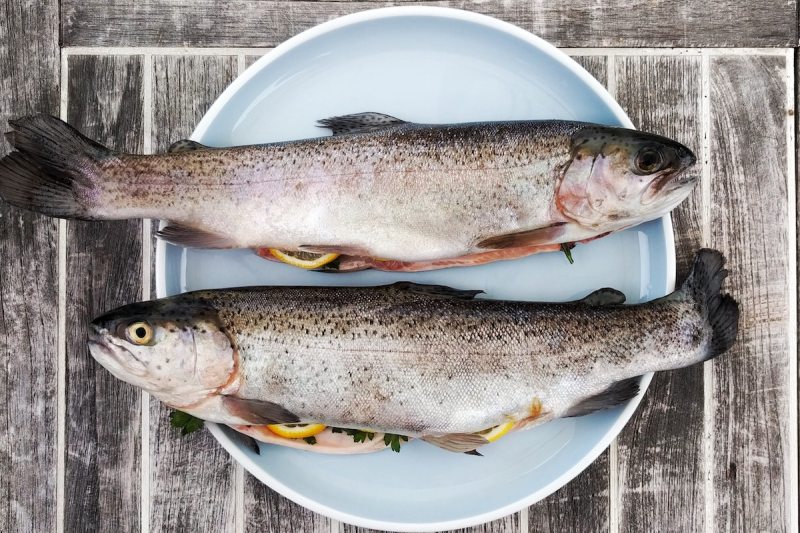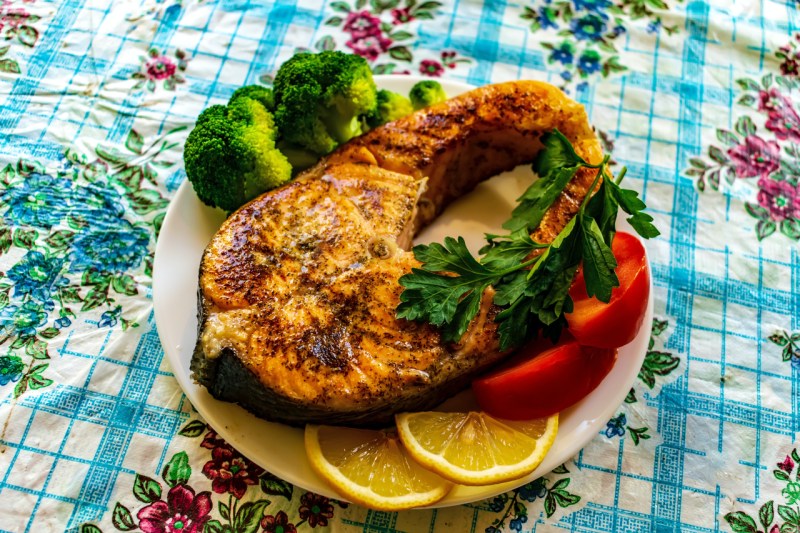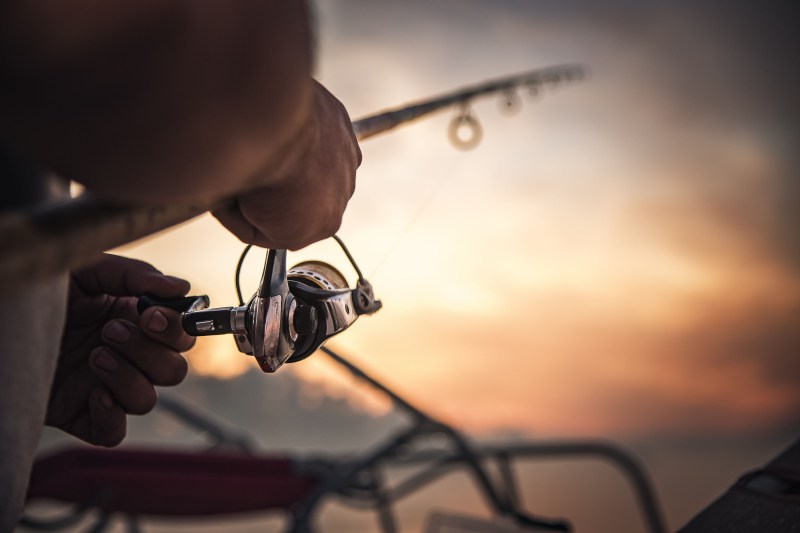
Sporting your best fishing gear and you just landed a big catch? Nice work! A tasty, fresh fish fillet is just a few slices away. Whether you’re planning to cook the whole fish, steak it, or fillet it, you must learn how to clean your catch. Follow this guide to learn how to clean a fish you just caught fresh.
How long can you keep fresh fish before cleaning it?

Now that you have some freshly caught fish, how long can you keep it whole before it needs to be cleaned? Fish, after all, has incredible health benefits; ideally, you want to clean the whole fish as soon as possible to preserve the best flavor. However, if time or other constraints are an issue for you, you can keep whole fish uncleaned on ice or refrigerated for a day or two at the max. Any longer, and you risk losing precious flavor and texture and risk spoilage.
Preparing to clean a fish

The first lesson is that the fresher the fish, the better the meat will be. Feel free to freeze prepared fish, but it begins losing taste as the meat dries and hardens. Your freezer can end up smelling like fish meat, and that’s a hard scent to get out.
Cleaning a fish is a bloody business, so try to use a park cleaning station. If not, try to find an outdoor table outside. Do the right thing and set down a liberal layer (or three) of newspaper under your prep station. Make sure you have access to a tap as you want to rinse the fish down before cleaning. And you’ll want to have clean, rinsed hands throughout the process.
The tools you’ll need
- Newspaper
- Bucket
- Sharp fillet knife
- Scaling tool (or a butter knife)
- Cooler of ice
- Platter for clean fish
- Cutting board
- Disposable gloves (optional)
Step 1: Rinse the oily coating off the fish as best you can.
Step 2: After you rinse the fish, pat it dry with paper towels. You don’t want to handle a lubricated body that you’re slicing with a sharp knife.
How to scale a fish

Running the fish under fresh, cold water will help to loosen its scales. After you’ve patted the fish down, lay the fish on top of several sheets of newspaper, which will assist in an easier cleanup.
Step 1: Take a firm grasp of the tail and, using either a descaling tool or the blunt edge of a butter knife, run your tool from tail to head, scraping away its scales. After several runs, the torso should begin to feel smooth.
Step 2: Rinse the descaled fish side under running water to get rid of the residue and remaining scales.
Step 3: Carefully run a finger against the grain of the fish to feel for any missed sections, watching out for sharp fins.
Step 4: Flip the fish over and repeat.
How to gut a fish

Step 1: Wrap up and toss out the scraped scales. Lay out another layer of newspaper and set the cutting board on top and your fish on its side. d to cook.
Step 2: Insert the knife tip into the fish’s belly near the anal opening and move the blade up along this midsection, cutting to the head. Be careful to keep the knife blade shallow. Punctured intestines will ruin the meat.
Step 3: Spread the body open and scoop out the entrails. Find the fish’s anus and slice in a “V” or notch shape. Make sure you remove the kidney as well. If the fish has one, the kidney will be higher up, near the backbone. Scrape it out with a spoon.
Step 4: Hose or water down the now-cleared cavity until you’re left with white or pink meat. Watch out for dark tissue lining the abdominal cavity. Scour this out to avoid an overpowering oil in the meat. It’s your choice whether or not to cut off the head from behind the gills. Many game fish (trout in particular) are cooked with the head on. And if you can get to it, some of the fish’s most tender meat is behind its gills.
Step 5: Follow proper health protocols and clean your cleaning area. Collect and wrap the guts, heads, and scales in the newspaper and toss them in a garbage can.
Now comes the fun part: your clean fish is ready to be dressed.
How to fillet a fish

Now that you’ve got a clean fish, it’s time to slice it up into edible cuts. Fish fillets are one of the more versatile ways to fire up fresh fish.
Step 1: Place the fish with the dorsal fin facing you. Grab a sharp, flexible fillet knife to pierce behind the gills and pectoral fin.
Step 2: Cut down to the spine, but don’t sever it. Once the knife reaches the backbone, turn the knife flat and cut along and down the spine. This should create a flap extending from the fish’s head to its tail.
Step 3: Lift the flap with your non-dominant hand and continue to slice the fillet along the fish body, keeping your blade as close to the backbone as you can to maximize the meat. Be aware, but don’t freak if you cut into the ribcage — you can always remove rib bones later.
Step 4: When the cut is completely removed, place fillets down, skin first. Fried or grilled produces perfect crispy skin that’s a tasty snack or addition to your meal, so feel free to leave this on. If you’re so motivated, however, you can separate the fillet and the skin simply by sawing between the skin and the meat.
Step 5: Rinse with cold water, pat dry with a paper towel, flip and repeat.
How to steak a fish

Big game fish like tuna, salmon, or mahi-mahi deserve a beefier preparation. Steaking your fish not only gives you meatier portions, but you also get to skip what can be tedious filleting.
Step 1: Take your scaled and gutted fish back down and make a series of cuts perpendicular to the spine.
Step 2: Work from head to tail, chopping one-half and one-inch thick steaks.
Step 3: Trim away bones and fat from each cut, but leave the skin and backbone intact.
Step 4: Chop your catch into beef steaks, sear those puppies on the grill, and enjoy.
What is the best knife to clean a fish?

The best knife to clean a fish depends on your preferences and the type of fish you’re cleaning, so here are some good options.
- A fixed-blade fillet knife: The most popular type of knife for cleaning fish. Its long, thin blade is flexible enough to maneuver around bones but stiff enough to easily fillet through flesh. A fixed-blade knife typically ranges from 6 to 8 inches in length.
- An electric fillet knife: Ideal if you clean a lot of fish or if you have difficulty using a manual knife. The blade on this type of knife is powered by a motor. It makes quick work of filleting fish, however, it can be more difficult to control and can damage the flesh of delicate fish if you don’t know exactly what you’re doing.
- A folding fillet knife: What most people use who want a portable knife they can take camping or fishing and have at the ready after their catch. A folding fillet knife is similar to fixed-blade fillet knife, but like the name suggests, it folds up for easier storage. Keep in mind that these are typically not as stiff or as long as fixed-blade knives, which can make them more difficult to use.
Tips and warnings

Unfortunately, the human impact on fish habitats makes learning about the environment where you’re fishing requisite.
- Make sure that the fish you’re catching is safe to eat, as mercury and heavy metal poisoning are common. State agencies and outdoor organizations are good places to research before tossing a line in the water.
- Fish also have natural protection. Watch out for sharp teeth, fins, spikes, barbs, and other appendages that can cause severe punctures or scrapes.
Thanks to your knife work, you’ve carved out a blank canvas to add any number of herbs, spices, zests, or marinades. If you’re looking for technique-driven tips, such as how to age fish at home or grill fish like an executive chef, The Manual has got you covered.



